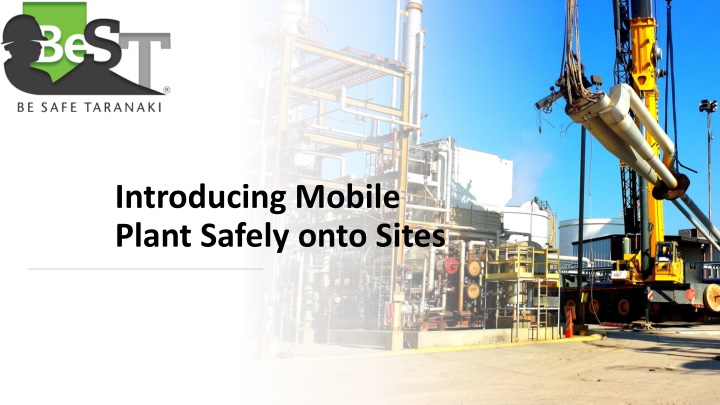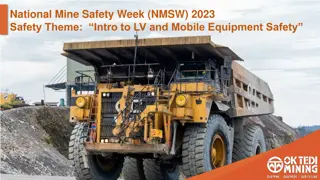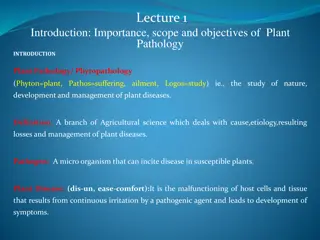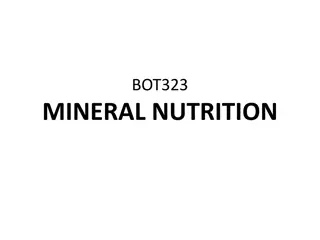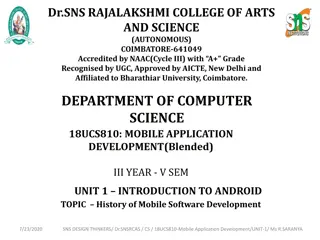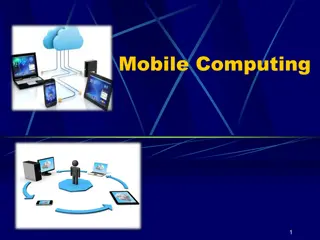Ensuring Safe Introduction of Mobile Plant Equipment
Conduct thorough risk assessments, ensure regulatory compliance, plan site layout logistics, arrange necessary training, provide operator certification, and establish effective communication protocols for the safe introduction of new mobile plant equipment onto worksites.
Download Presentation

Please find below an Image/Link to download the presentation.
The content on the website is provided AS IS for your information and personal use only. It may not be sold, licensed, or shared on other websites without obtaining consent from the author.If you encounter any issues during the download, it is possible that the publisher has removed the file from their server.
You are allowed to download the files provided on this website for personal or commercial use, subject to the condition that they are used lawfully. All files are the property of their respective owners.
The content on the website is provided AS IS for your information and personal use only. It may not be sold, licensed, or shared on other websites without obtaining consent from the author.
E N D
Presentation Transcript
Introducing Mobile Plant Safely onto Sites
Pre Pre- -Introduction Introduction Assessment Assessment Risk Assessment: Conduct a thorough risk assessment to identify potential hazards associated with the new equipment on the specific site. Regulatory Compliance: Ensure compliance with local health and safety regulations and standards for the use of the new mobile plant equipment. Check certification of machine and incorporate Daily/Weekly checks
WorkSafe NZ Workers duties come under Use & Inspections
Site Layout and Logistics: Assess the site layout and identify both suitable and unsuitable areas for the operation of the new equipment. Plan for the logistics of transporting and storing the equipment when not in use. Examples Do not block entries, exits or thoroughfares Check if parked correctly Keys where to store when not in use This Photo by Unknown Author is licensed under CC BY
Training Needs Analysis: Identify the skill sets required to operate the new equipment. Arrange for necessary training programs for operators. Locally Hirepool can arrange for onsite training through a 3rd party Wood Training have indicated they also have courses available WorkSafe Mobile Elevating Work Platforms BeSafe Taranaki WorkSafe Mobile Elevating Work Platforms BeSafe Taranaki
Training and Certification Operator Training: Provide comprehensive training for operators on the safe operation of the specific equipment. Ensure operators are familiar with emergency procedures and equipment controls. Certification: Certify operators only after they have successfully completed the training and demonstrate competence in using the equipment. Only certified operators can operate machinery on site, proof of this will be verified before operation.
Communication: Notify Stakeholders: Inform all relevant stakeholders, including site personnel, about the introduction of new mobile plant equipment. Clearly communicate the benefits and safety features of the new equipment. Emergency Communication: Establish a clear system for communication during emergencies, including the use of signals and alarms. This Photo by Unknown Author is licensed under CC BY-ND
Implementation: Soft Launch: Consider a soft launch where the new equipment is gradually integrated into day-to-day activities, allowing for adjustments based on real-world usage. Supervision: Initially, have experienced personnel supervise the operation of the new equipment to ensure compliance with safety protocols.
Continuous Monitoring: Performance Monitoring: Continuously monitor the performance of the new equipment and address any operational issues promptly. Feedback Mechanism: Establish a feedback mechanism for operators to report any concerns or improvements related to the new equipment.
Review and Adapt: Regular Review Meetings: Adaptation: Schedule regular review meetings to discuss the performance and safety aspects of the new equipment. Adapt procedures and protocols based on the feedback and lessons learned from the initial phase of implementation.
Documentation: Manuals and Procedures: Provide comprehensive manuals for the new equipment and ensure that standard operating procedures are well-documented. Records: Maintain records of training sessions, certifications, and equipment maintenance activities.
